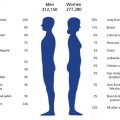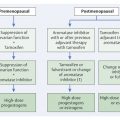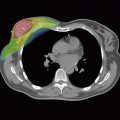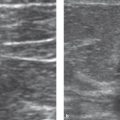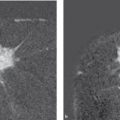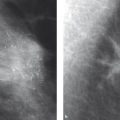Logistics in an Interdisciplinary Breast Center
15.1 Background
In the last third of the 20th century it became clear that efficient diagnosis and treatment of breast cancer requires close cooperation between various areas of expertise. The establishment of interdisciplinary professional societies was the logical consequence. In Germany, this was the German Society of Senology (Deutsche Gesellschaft für Senologie, DGS), and for Europe, the European Society of Mastology (EUSOMA). In these organizations, it quickly became clear that it was not sufficient to organize interdisciplinary conventions. Much more important for optimal breast diagnosis and treatment was close cooperation between the various disciplines involved in the daily care of the affected women.
In 1998, a consensus statement—the “Florence Statement”—was adopted by a group of European organizations, including EUSOMA, the Breast Cancer Cooperative Group of the European Organization for the Research and Treatment of Cancer (EORTC), and the European self-help group Europa Donna (the European Breast Cancer Coalition). This consensus statement called for multidisciplinary breast clinics with mandatory quality assurance programs to be available for all women living in the European Union. In it, a set of specifications—the “Requirements of a Specialist Breast Unit”—was developed to be used throughout Europe. With the support of the European parliaments, the voluntary certification program was instituted, which placed high demands on the breast units in terms of content and organization (see http://www.eusoma.org; accessed February 28, 2017).
Parallel to this, the DGS, in cooperation with the German Cancer Society (Deutsche Krebsgesellschaft, DKG), initiated the national breast center certification program. In most respects, this is similar to the EUSOMA program but it requires a defined quality management system according to industry norms set up by the German Institute for Standardization (Deutsches Institut für Normung, DIN) and based on the appropriate current German guidelines regarding the diagnosis, treatment and aftercare of breast cancer. 1 Both certification systems agree that a minimum number of 150 new patients with primary breast cancer per year are required to justify the large structural and organizational expenditure required by a certified breast center and to assure its efficient use. Both systems carry out a recertification every 3 years and an annual review audit, in which the structural and process quality and the quality of the results are reviewed. During this process, not only the individual partners (e.g., diagnostic radiology, pathology, gynecology, and radiation therapy) are evaluated but also, in particular, the interdisciplinary cooperation between the members. Particular value is placed on the psycho-oncologic support and qualified oncologic care. For example, EUSOMA mandates additional breast care nurses, who, after a specialized training, accompany the affected women from her first entry into the breast center through the entire process of diagnosis, treatment, and aftercare (see the EUSOMA website, http://www.eusoma.org).
Today there are 26 EUSOMA and 204 DGS/DKG certified breast centers in Germany, in which approximately 50,000 primary cases are treated annually, representing about 85% of the German primary cases (http://www.krebsgesellschaft.de; accessed February 28, 2017). The success of the certified breast centers has led the German Cancer Society to establish further cancer facilities, the “organ cancer centers,” with corresponding certification programs—centers for gynecologic cancer, bowel cancer, skin cancer, head and neck tumors, lung cancer, and pancreatic and prostate cancer. Clinics that have a minimum of three such certified organ cancer centers are known as certified oncologic centers. As oncologic centers of excellence, comprehensive cancer centers (CCCs), which pursue additional oncologic research, constitute the highest echelon in this three-level model.
15.2 Structure of a Certified Breast Center
The breast cancer center of the University Medical Center Göttingen serves as an example of a breast cancer center certified by the German Society of Senology/German Cancer Society and the European Society of Breast Cancer Specialists (▶ Fig. 15.1). For all participating external partners, the cooperation and commitment are contractually regulated according to the stipulated quality criteria. All central partners are extensively evaluated annually by external evaluators, and the quality criteria and quality management system are reviewed according to the standards of the German Institute for Standardization (DIN) and the International Organization for Standardization (ISO).

Fig. 15.1 Structure of Certified Breast Center of the University of Medicine, Göttingen.
Stay updated, free articles. Join our Telegram channel

Full access? Get Clinical Tree


